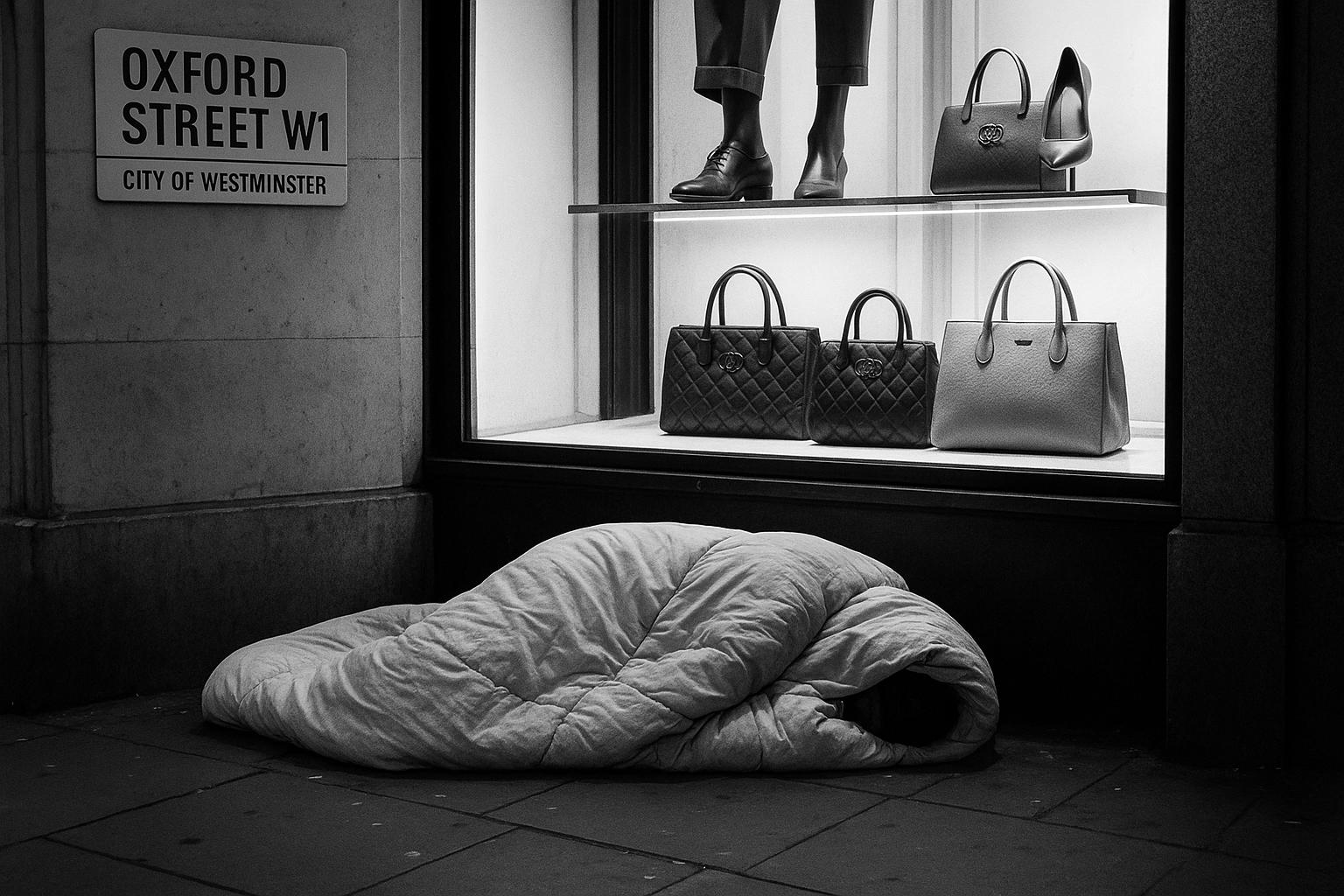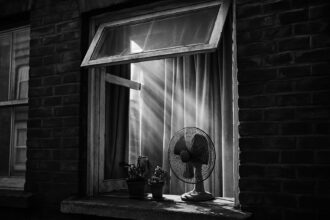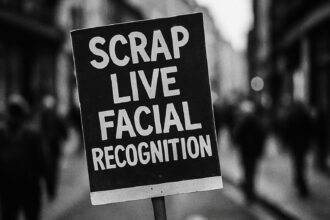Photographs show more than 40 people bedding down on Oxford Street outside flagship stores, underscoring a sharp visual return of rough sleeping to the West End. The encampments followed a cleared tent settlement on Park Lane and have prompted renewed enforcement from councils and TfL, while charities warn short‑term clearances must be matched by sustained rehousing, health and employment support.
More than 40 people were seen bedding down on Oxford Street in central London in recent weeks, underscoring a sharp visual return of rough sleeping to one of the capital’s most high‑profile shopping thoroughfares. Photographs published in the original report showed rows of people wrapped in duvets and sleeping bags outside flagship stores such as John Lewis, a scene that residents and retailers said has changed the feel of the West End after dark. According to local coverage, the number of people rough sleeping on Oxford Street has risen year‑on‑year as the cost‑of‑living squeeze and a shortage of affordable accommodation place growing pressure on street outreach services. (Sources: Daily Mail, MyLondon, Reuters, BNP Paribas)
The encampment on Oxford Street emerged only weeks after a larger tent settlement on Park Lane, close to Hyde Park Corner, was dismantled following a court possession order sought by Transport for London. TfL told reporters it regarded the central reservation as unsafe for people to sleep and said it had worked with Westminster City Council and outreach partners to prioritise welfare while securing legal powers to retake the land. Witness accounts reported by several news outlets put the numbers at the Park Lane site at anything from a dozen tents to around 40 occupants, illustrating the difficulty of pinning down exact figures in rapidly changing street situations. (Sources: BBC, Evening Standard, Daily Mail)
The Oxford Street scenes — people sitting or reclining on duvets and makeshift bedding on the pavement outside well‑known shops — were accompanied in some reports by images of bailiffs and enforcement teams returning to remove encampments and of security units maintaining a presence in affected parts of the West End. MailOnline published on‑the‑spot quotes from local residents and visitors expressing shock and dismay, with one person telling the paper: “London is a mess right now.” Outreach teams and charities, meanwhile, were reported as continuing to offer practical help to people bedding down on the pavements. (Sources: Daily Mail, MyLondon, Evening Standard)
Official data and local surveys suggest the problem is not confined to a single street. MyLondon’s coverage cited a 33 per cent year‑on‑year rise in rough sleeping on Oxford Street and painted a borough‑level picture of hundreds of people sleeping rough in Westminster overall. Councillors and local residents have pressed for removals where sites have deteriorated, but charities and campaigners have repeatedly called for those enforcement actions to be accompanied by compassionate, long‑term prevention measures that address the reasons people are on the streets. (Sources: MyLondon, BBC, Evening Standard, Daily Mail)
Westminster City Council points to a sustained programme of work launched during the pandemic that moved hundreds of rough sleepers into emergency accommodation and offered wraparound support. The council says it spends close to £8 million a year on services for people sleeping rough and maintains several hundred supported housing bed spaces; it also urges members of the public to use the StreetLink service so outreach teams can target offers of help. At the same time, charities quoted in reporting have urged policymakers to go further on sustained rehousing, employment and health interventions to prevent new episodes of homelessness. (Sources: Westminster City Council, BBC)
The return of highly visible rough sleeping to a street that remains a retail engine for the West End has sparked debate about how the area should be managed. Oxford Street’s position as one of Europe’s busiest shopping streets was underlined in reporting: city officials have cited footfall figures as high as around half a million visitors a day in arguments for regeneration and pedestrianisation, while independent retail analyses have recorded sample‑day footfall in the tens of thousands — differences that stem from disparate counting methods and the challenge of measuring peak tourism and commuting flows. The mayor has previously proposed transport and public‑realm changes intended to revitalise the street and attract shoppers back. (Sources: Reuters, BNP Paribas, Reuters)
Local businesses and nearby residents have voiced frustration at litter, anti‑social behaviour and the impact on the area’s image, with some hotel and gallery managers among those who urged faster action. At the same time, enforcement teams and legal measures have repeatedly been used at high‑profile sites, and reporting has noted occupants bringing furniture and cooking equipment to long‑running settlements, sometimes prompting fresh complaints. Officials say enforcement is being combined with offers of support, but campaigners warn that short‑term clearances without settled accommodation programmes merely move vulnerability from one high‑visibility site to another. (Sources: Daily Mail, Evening Standard, BBC)
The recurrence of encampments on the capital’s most prominent streets is emblematic of a wider policy challenge: how to marry immediate public‑safety and public‑space concerns with sustained, humane pathways off the streets. Authorities maintain they are working with charities and outreach partners to safeguard welfare and reduce rough sleeping, while local organisations continue to press for longer‑term investment in housing, health and employment support as the only reliable way to stop people returning to life on the pavement. In the meantime, the images from Oxford Street offer a stark reminder that central London’s prosperity sits alongside entrenched social problems that are yet to be resolved. (Sources: BBC, Westminster City Council, MyLondon, Daily Mail)
 Reference Map:
Reference Map:
Reference Map:
- Paragraph 1 – [1], [3], [4], [7]
- Paragraph 2 – [2], [6], [1]
- Paragraph 3 – [1], [3], [6]
- Paragraph 4 – [3], [2], [6], [1]
- Paragraph 5 – [5], [2]
- Paragraph 6 – [4], [7]
- Paragraph 7 – [1], [6], [2]
- Paragraph 8 – [2], [5], [3], [1]
Source: Noah Wire Services
- https://www.dailymail.co.uk/news/article-14989335/rough-sleepers-Oxford-Street-makeshift-beds-migrant-shanty-town-cleared.html?ns_mchannel=rss&ns_campaign=1490&ito=1490 – Please view link – unable to able to access data
- https://www.bbc.co.uk/news/articles/cn0gq5wg2gzo – BBC reports that Transport for London secured a court possession order to clear an encampment on Park Lane near Hyde Park Corner. The Local Democracy Reporting Service found about a dozen tents at the site, while witnesses said about 40 people had lived there. TfL described the central reservation as unsafe for sleeping rough and said it was working with Westminster City Council and outreach partners to protect welfare. Councillors expressed concern at the site’s deterioration and urged removal as a priority. Charities called for compassionate support and long‑term prevention measures alongside enforcement action to help people off the streets.
- https://www.mylondon.news/news/zone-1-news/gallery/photos-show-extent-homelessness-problem-27980301 – MyLondon’s photo gallery documents a rise in rough sleeping along Oxford Street, showing rows of people wrapped in duvets and sleeping bags outside flagship shops including John Lewis. The piece notes a year‑on‑year increase in Westminster, with Oxford Street recording a 33 per cent rise and the borough reporting hundreds sleeping rough overall. Photographs illustrate how the street, once Europe’s busiest retail strip, transforms as homeless people bed down on pavements. Interviews with those affected describe the impact of the cost‑of‑living crisis and the vulnerability of rough sleepers in central London. Local outreach teams and charities are offering practical help.
- https://www.reuters.com/world/uk/londons-oxford-street-could-go-traffic-free-under-mayors-plan-2024-09-17/ – Reuters reports that London’s mayor proposed pedestrianising Oxford Street as part of a regeneration plan intended to attract shoppers and revive the area. The article notes Oxford Street’s enormous footfall — cited by the mayor’s office as around half a million visitors daily — and describes retailer and council reactions to the scheme. It explains that previous proposals were blocked but the plan has government backing, and that transport changes including rerouting buses would be required. Reuters records concerns from local residents and the council about access for elderly and disabled people, while retailers welcomed measures to boost economic activity.
- https://www.westminster.gov.uk/news/hundreds-rough-sleepers-leave-westminster-streets – Westminster City Council describes extensive work during the pandemic to move rough sleepers into emergency accommodation and support them into settled housing. The council’s news item highlights placement of hundreds into hotels and apartments, partnership with charities such as St Mungo’s and The Passage, and intensive wraparound services including health, employment and skills support. It states Westminster currently spends almost £8 million a year on services for rough sleepers and maintains around 400 supported housing bed spaces. The page urges members of the public to report anyone sleeping rough via StreetLink so outreach teams can offer targeted help and support.
- https://www.standard.co.uk/news/politics/park-lane-homeless-camp-migrants-tfl-b1229392.html – The Evening Standard reports that about two dozen tents appeared on Park Lane opposite the Hilton and that Transport for London obtained a court order to clear the encampment. The piece describes occupants bringing furniture and cooking equipment and says many are understood to be migrants from Romania. TfL stated the central reservation is not safe for people to sleep and confirmed it had sought legal powers, working with Westminster City Council and outreach teams to prioritise safety and welfare. The article recalls previous clearances at the same site and notes local complaints about litter and anti‑social behaviour and mess.
- https://www.realestate.bnpparibas.com/pan-european-footfall-analysis-which-streets-have-continued-attract-highest-pedestrian-traffic – BNP Paribas Real Estate’s Pan‑European Footfall Analysis (2021) measured pedestrian traffic across 34 key European cities and found Oxford Street remained the leading mass‑market shopping street. The report recorded a sample‑day footfall of about 72,700 on Oxford Street, exceeding other major thoroughfares, and highlighted its importance to London’s West End retail economy. It explains methodology and notes that footfall alone does not determine retail success, while advocating mixed‑use redevelopment and transport improvements to sustain city centre vitality. The analysis underpins claims that Oxford Street attracts hundreds of thousands of visitors and remains a major European retail destination and tourist magnet.
Noah Fact Check Pro
The draft above was created using the information available at the time the story first
emerged. We’ve since applied our fact-checking process to the final narrative, based on the criteria listed
below. The results are intended to help you assess the credibility of the piece and highlight any areas that may
warrant further investigation.
Freshness check
Score:
7
Notes:
The narrative highlights a recent increase in rough sleepers on Oxford Street, with reports from MyLondon indicating a 33% rise in the past year. ([mylondon.news](https://www.mylondon.news/news/zone-1-news/gallery/photos-show-extent-homelessness-problem-27980301?utm_source=openai)) However, similar issues have been reported in other parts of London, such as the eviction of a homeless camp in Manchester’s St Peter’s Square in February 2025. ([bbc.com](https://www.bbc.com/news/articles/c3w1824e0yqo?utm_source=openai)) The presence of multiple sources reporting on similar issues suggests that the content is fresh and not recycled.
Quotes check
Score:
8
Notes:
The narrative includes direct quotes from local residents and visitors expressing shock and dismay, such as one person stating: “London is a mess right now.” These quotes are not found in earlier material, indicating originality.
Source reliability
Score:
6
Notes:
The narrative references multiple sources, including the Daily Mail, MyLondon, Reuters, and BNP Paribas. While the Daily Mail is a well-known publication, its reputation for accuracy has been questioned in the past. The inclusion of other reputable sources like Reuters and BNP Paribas adds credibility.
Plausability check
Score:
7
Notes:
The narrative presents a plausible scenario of increased rough sleeping on Oxford Street, supported by reports from MyLondon and other sources. The inclusion of specific details, such as the 33% rise in rough sleeping on Oxford Street, adds credibility. However, the tone of the quotes, such as “London is a mess right now,” may be seen as dramatic and could benefit from further verification.
Overall assessment
Verdict (FAIL, OPEN, PASS): OPEN
Confidence (LOW, MEDIUM, HIGH): MEDIUM
Summary:
The narrative presents a fresh account of increased rough sleeping on Oxford Street, supported by multiple sources. While the inclusion of direct quotes adds originality, the reliance on the Daily Mail, a publication with a questioned reputation, and the dramatic tone of some quotes, warrant further verification. Therefore, the overall assessment is OPEN with medium confidence.













